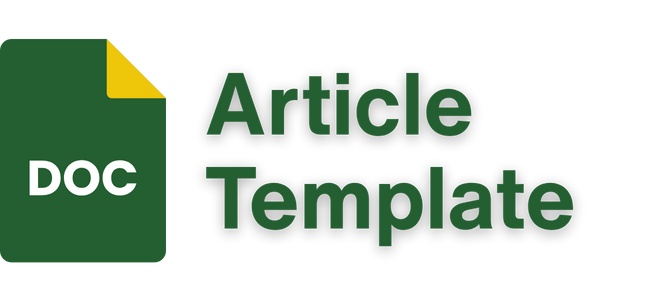PENGARUH ENTREPRENEURSHIP, BUSINESS COACHING, MENTORING DAN KOMUNITAS KREATIF TERHADAP KINERJA INDUSTRI KREATIF
Studi pada Industri Kreatif yang Tergabung dalam Malang Creative Fusion
DOI:
https://doi.org/10.32812/jibeka.v12i1.19Keywords:
Industri Kreatif, Entrepreneurship, Business Coaching, Mentoring, Komunitas Kreatif, Kinerja Industri Kreatif, MCFArticle Metrics
Abstract
This study aims to determine the influence of entrepreneurship, business coaching, mentoring and creative communities both simultaneously and partially to the creative industries performance. Entrepreneurship is reflected by the instrumental, prestigious, sociable, takeover, self-sufficiency, hard work, self-confidence, innovative, leadership, action oriented, simple thinking and focus on effort. While business coaching and mentoring is reflected by the forms of training and coaching activities provided by the government and others, the frequency of training and coaching, the duration of assessment and implementation. While the creative community is measured on four aspects, that are, the nature, membership, way of working and relationships with other communities. Performance is indicated by customer growth rate, customer satisfaction level, customer satisfaction level, number of new products, level of job satisfaction and productivity level. Collecting data is done through direct survey to the research object, the creative industry actors who are members of MCF (Malang Creative Fusion). The results show that entrepreneurship, business coaching, mentoring and creative community have simultaneously influence to the creative industries performance. Also, that four independent variables, partially, has positive significant influence to the creative industries
performance. So, in order to achieve optimal creative industry performance, it is expected that entrepreneurship in each creative industry actors, collaboration and synergy of quadruple helix are improved.
Downloads
References
2.Akhmad, Sabarudin dan Rachmad Hidayat. 2015. Pemetaan Potensi Industri Kreatif Unggulan Madura. Jurnal Sains, Teknologi dan Industri. Vol.12. No2. Pp.155-165.
3.Alhempi, Raden Rudi dan Wismar Harianto. 2013. Pengaruh Pelatihan dan Pembinaan Terhadap Pengembangan Usaha Kecil pada Program Kemitraan Bina Lingkungan. Media Riset Bisnis dan Manajemen. Vol.13. No.1. pp.20-38. .
4.Bakar, Usman dan Musrifah. 2003. Pengaruh Pembinaan Terhadap Produktifitas Pengrajin Dalam Upaya Meningkatkan Kinerja Keuangan. Studi Pada Industri Sulaman Tradisional Motif Aceh Di Kota Banda Aceh. Jurnal Manajemen Dan Bisnis. Vol.5. No.3. Bernardin, H., J., dan Russel, e. A. 1993. Human Resource Management. An Experimental Approach. Mc Graw Hill International edition. Singapore..
5.Bidang Informasi Publik Pemkot Malang. 2016. Industri Kreatif di Kota Malang Harus Miliki Ciri Khas. http://malangkota.go.id/2016/03/30/industri-kreatif-di-kota-malang-harus-miliki-ciri-khas/.Diunduh tanggal 6 April 2016 pk. 10:48.
6.Creswell, JW. 2010. Research Design. Qualitative, Quantitative, and Mixed Methods Approaches. Third Edition. Sage Publication. USA..
7.Dananjaya, I Gusti Agung Nyoman. 2014. Pengaruh Jiwa Kewirausahaan dan Manajemen Agribisnis terhadap Keberhasilan Gapoktan Simantri di Kabupaten Tabanan. Tesis. Prodi Agribisnis. PPS Udayana. Denpasar..
8.Departemen Perdagangan RI. 2007. Studi Pemetaan industri Kreatif. Departemen Perdagangan RI. Jakarta.
9._______________________. 2008. Rencana Pengembangan Ekonomi Kreatif. Indonesia
10.2009-2025. Departemen Pedagangan RI. Jakarta.
11.Dibrell, C. dan Davit P.S. 2008. Fueling Innovation Trough Information Technology In SMEs. Journal of Small Business Management. Vol.45. No.2. pp.203-218.
12.Dwivedi, Anju. 2004. Metodologi Pelatihan Partisipasif. Penerbit Pondok Edukasi. Yogyakarta.
13.Florida, R. 2002. The Rise of Creative Class. Cambridge. Basic Books.
14.Genova. 2002. Mengenal Lebih Dekat Kewirausahaan. Jurnal Ekonomi Perusahaan. STIE IIBI. Jakarta.
15.Hanan, Himasari. 2010. Building Creative Communities Intelligently. Artepolis 2. Creative Communities and The Making of Place. Bandung. ITB. E-2. E-9.
16.Hidayat, S. 2001. Pemberdayaan Ekonomi Rakyat. Pustaka Quantum. Jakarta.
17.Jaques, Elliot dan Stephen D. Clement. 1994. Executive Leadership. Scason Hall Publisher Ltd. Second Printing. Cambridge. Maassachusetts. USA.
18.Mandiri, Ardi. 2015. Malang Akan Dijadikan Kota Industri Kreatif Digital. http://www.suara.com/tekno/2015/09/05/045100/malang-akan-dijadikan-kota-industri-kreatif-digital. Diunduh tanggal 6 April 2016 pk. 09:57.
19.MCF 1) .2016. Tentang MCF. https://www.facebook.com/pg/malangcreativefusion/about/?ref=page_internal. Diunduh tanggal 10 Juli 2017.
20.MCF 2) . 2016. Tentang Kami. http://malangcreativefusion.com/tentang-kami. diunduh tanggal 3 April 2016 dan 10 Juli 2017.
21.Nafila, Oktariza. 2013. Peran Komunitas Kreatif dalam Pengembangan Pariwisata Budaya Situs Megalitikum Gunung Padang. Jurnal perencanaan Wilayah dan Kota. Vol.24 No.1 Nurlaela, Siti. 2010. Profil Industri Kreatif Pengrajin Handycraff di desa Sumber Kecamatan Trucuk Kabupaten Klaten. Jurnal GEMA. Vol.22. No.40. pp.683-694
22.Nusantoro, Adi. 2002. Memberdayakan Ekonomi Rakyat untuk Pembangunan Ekonomi Indonesia. Jurnal Ekonomi dan Bisnis. UGM. Yogyakarta.
23.Purwaningsih, Ratna dan Pajar Damar Kusuma. 2015. Analisis Faktor-Faktor yang Mempengaruhi Kinerja Usaha Kecil dan Menengah (UKM) dengan Metode Structural Equation Modeling (Studi Kasus UKM Berbasis Industri Kreatif Kota Semarang). Prosiding SNST ke-6.
24.Raldianingrat, Welis dan Wuryanti. 2014. Upaya Peningkatan Kinerja Industri Kreatif Kerajinan Melalui People Equity dan Strategi Inovasi di Kabupaten Konawe. Ekobis. Vol.15. No.2.
25.Raymond, Michael dan R. R Retno Ardianti. 2013. Studi Deskriptif Tentang Entrepreneur
26.Motivastion dan Kinerja Bisnis pada Usaha Mikro dan Kecil Sektor Informal di Jawa Timur. AGORA. Vol.1. No.3.
27.Suprihanto, J. 2001. Penilaian Kinerja dan Pengembangan Karyawan. BPFE. Yogyakarta.
28.Wicaksono, Gumiriang dan Audita Nuvriasari. 2012. Meningkatkan kinerja UMKM Industri Kreatif Melalui Pengembangan Kewirausahaan dan Orientasi Pasar. Kajian pada Peran Serta Wirausaha Wanita di Kecamatan Moyudan, KabupatenSleman, Propinsi DIY. Jurnal Sosio Humaniora. Vol.3 No.4. pp:27-39.
29.Widianto, Eko. 2016. Kota Kreatif Indonesia dan ASEAN Gelar Konferensi di Malang. https://m.tempo.co/read/news/2016/03/30/090758373/kota-kreatif-indonesia-dan-asean-gelar-konferensi-di-malang. Diunduh tanggal 6 April 2016 pk. 10:30.
30.Widjaja, A. W. 2002. Administrasi Kepegawaian. Suatu Pengantar. Rajawali Press. Jakarta.
31.Yudistira, Fino. 2016. Malang Creative Fusion, Gerakan Masif Kreator Kota Malang. http://www.malang-post.com/features/malang-creative-fusion-gerakan-masif-kreator-kota-malang. Diunduh tanggal 3 April 2016.
32.Yusnia, DA dan Irma M. 2016. Komite Kreatif, Langkah Cerdas Hadapi MEA. Wawancara Ekslusif. Inspire. Edisi I.
33.Zabidi, Yasrin. 2015. Pengukuran dan Analisis Kinerja Industri Kreatif Gerabah Kasongan Bantul Guna Meningkatkan Daya Saing dan Kekuatan Daerah. Jurnal Angkasa, Vol. 7. No. 1.
Downloads
Published
How to Cite
Issue
Section
License
Happy reading. Do not forget to cite. Thank you.








